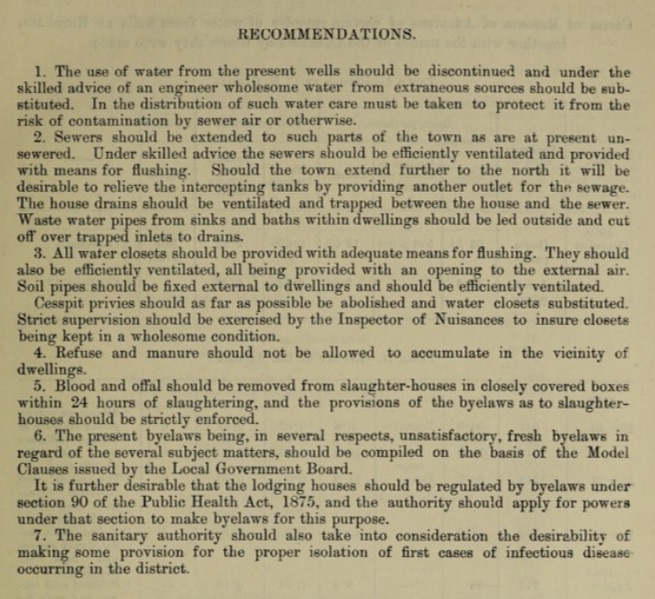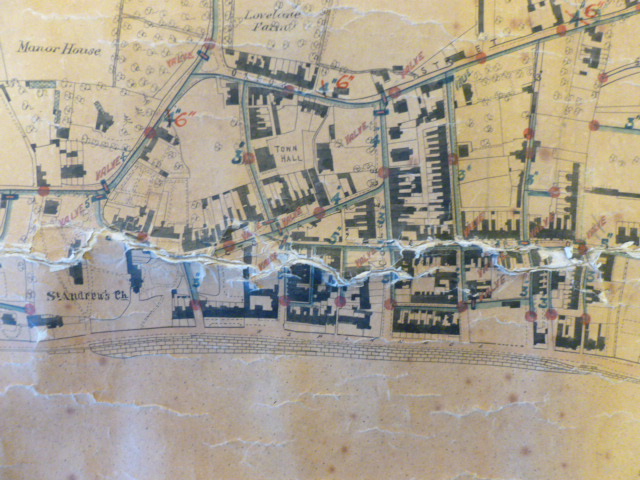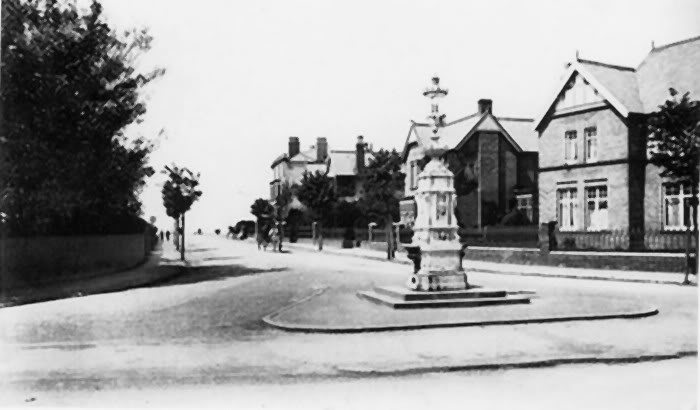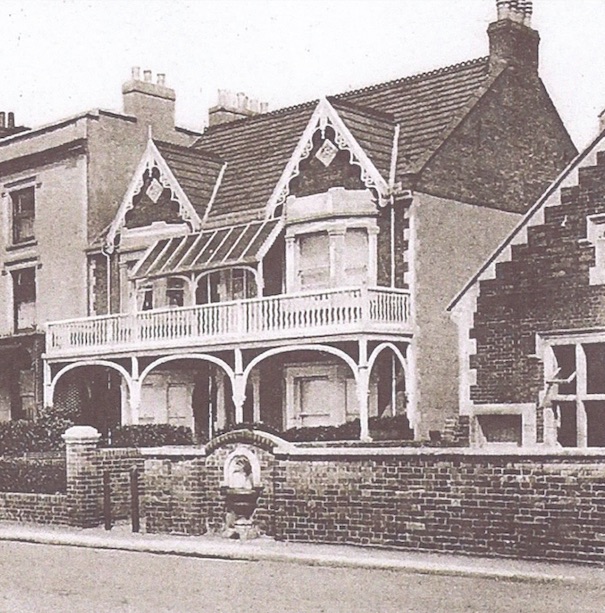In around 1843 John Gunter, a successful London confectioner, purchased the property which we now know as ‘Tregunter‘ He became so disgusted with the state of the sewerage that he began to advocate for improvements.
Over the years Burnham and the agricultural land around it had suffered greatly from flooding, poor drainage, open sewers and contaminated well water among many other things. Scrofula a type of TB caused by drinking infected milk was prevalent among children. Outbreaks of cholera, typhus, ague and fevers were frequent due to the damp from flooding and unsanitary conditions of the poorer cottagers.
In 1849 Gunter, together with George Reed, among others, instigated the setting up of a Local Board of Health.
During the Preliminary Inquiry by the Superintendent of the Board of Health Thomas Webster in 1850, Reed commented that the agricultural soil in and around Burnham was so sodden and foul that he could bring soil from Brent Knoll into his greenhouse in which he could grow pineapples, but that this was impossible with the soil in Burnham! It was proposed that sewage from houses in the town could be drained away and onto surrounding agricultural land to improve its fertility.
Some detail of the Report of the General Board of Health 1849 can be found here.
A plan for the town was designed by a Mr Whitehead (engineer), which comprised a system of sewers with an outfall into the river a little above low water level with accumulation tanks for times when the outlet was blocked by the tide. The tanks were on the site upon which the gas works and some dwellings were subsequently built. No provision was made for flushing, though ventilation pipes were provided. Work commenced in 1852.
In the 1880’s a new report was commissioned from a Dr Blaxall. When it was published in 1883 this indicated that the existing provision was inadequate in a number of ways.
The proximity of the gas works and dwellings to the holding tanks was considered prejudicial to the health of the employees and residents. It was also considered that there was risk to the stability of the arches of the tanks due to the amount of traffic with heavy loads of coal passing over them. There had already been a need for some work to strengthen the arches during which the gas company threatened to hold the local health authority responsible for any losses due hinderance of business.
New building had resulted in some domestic outlets to the south bypassing the accumulation tanks and some to the north of the town draining into a cesspool.
Deposits of sand and mud were causing blockages.
During the inquiry the town was flooded by a severe storm (1883) this aggravated the tendency to back-flow when the outlet valve closed at high tide and resulted in sewage being forced out of drains.
It was also noted that the three slaughterhouses in the town were not registered and had inadequate arrangements for removal of offal, with blood being allowed to flow into the sewers.
The water supply was at this time derived from numerous local wells with pumps, offering “availability at almost any spot”. However, there was concern that given the nature of the local geology the well water could easily become contaminated by leakage from the sewers and by “decaying organic matter from the overcrowded churchyard……….The wells in Oxford St, Gas Lane and other parts of the town are recognised as so polluted as to render the water unfit for drinking purposes.” Some of the more well-off were sending out to South Brent for drinking water.
Holts Brewery had attempted to sink a number of deeper wells but without success in finding water. The idea of trying to achieve improvements by boring was therefore not favoured. Another proposal considered was extending the Bridgwater mains supply via Huntspill and Highbridge (with them sharing the expense).

V.J. Wrigley, in ‘A History of Burnham-On-Sea and Highbridge’ informs us that negotiations for a supply from Bridgwater went on from 1884-85. However, in 1886, £650 was spent purchasing land with springs at Winscombe , a further £9,000 was borrowed from the Public Works Board to complete the pipeline, including building a pumping station at Brent Knoll to facilitate the supply, and to bring it under the GWR line at Brent Knoll station. In 1888 tenders were invited for connecting the mains supply to houses. Initially 200 households applied to be connected. The wife of the Revd. Theodore Dupuis of St andrew’s Church played an important part in this initiative.

By the turn of the century public drinking fountains had appeared in the town.


